Day 54: Antelope Wells to Columbus - 48 miles
Time flew by and after breakfasting and packing it was approaching 09:00. Not a single vehicle had driven by yet, a sign of how remote this border crossing is ...
I cycled through the gates and got the photo below. One normally thinks of a port as being on the ocean, but not here; the nearest water that is not underground is probably 500+ miles away!
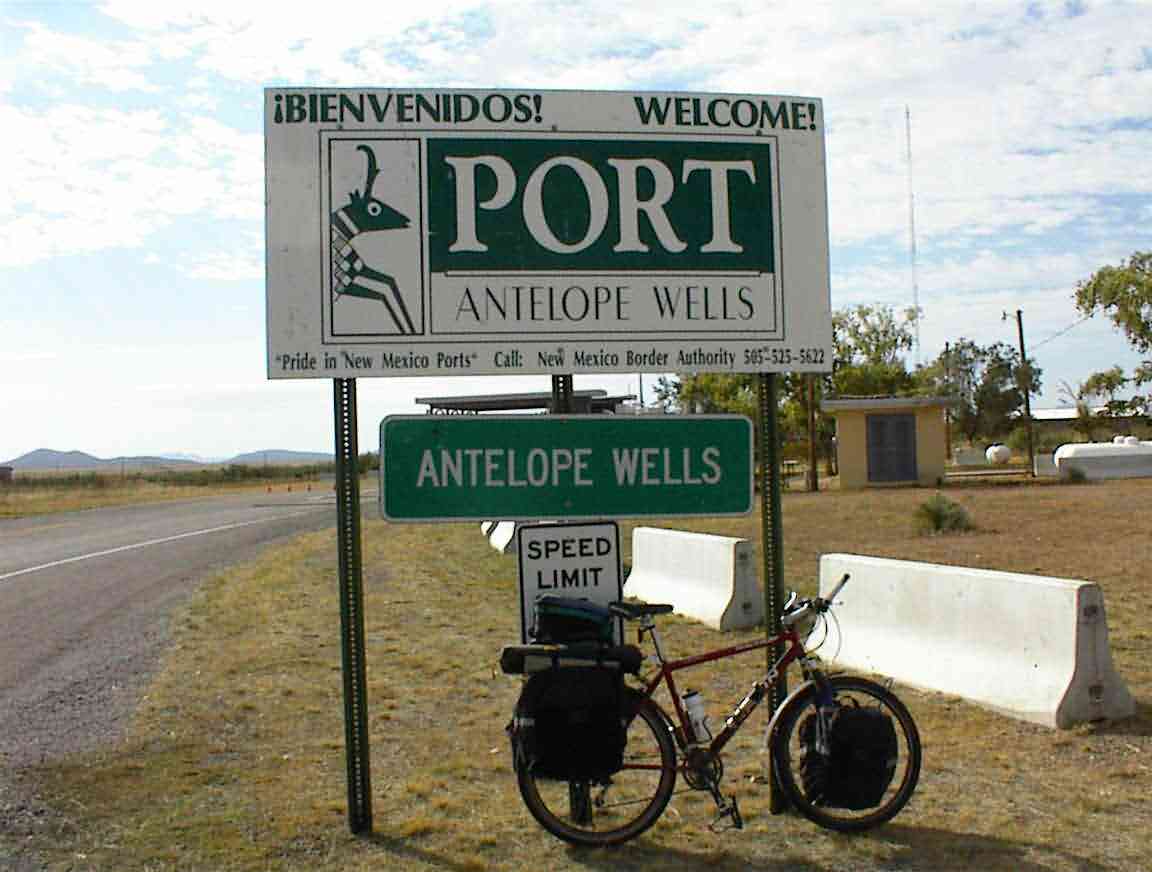
There was a customs officer sitting in the shade reading a novel and I cycled over asking if I could replenish my water bottle. Dan was most friendly and he directed me inside the office where there was a fountain. There was a second officer inside, Tim, who was also most welcoming, putting down his novel and pointing out the fountains to me.
Tim said that they get quite a few hikers and cyclists here but the number of cyclists were down quite a lot this year. Previously there were several large groups but none this year.
The office was quite interesting. The walls were plastered with 'Most Wanted' posters showing various miscreants wanted by the police and FBI. I had heard of one of them who had a prominent position, one Osama Bin Laden. Call me cynical, but I really couldn't see him using the Antelope Wells Port to try and enter the USA.
I asked if they needed the two shotguns that were prominently on the wall in ready reach. Dan said that in fact they were underarmed, even with their automatic pistols. There is a problem with narcotics smuggling and the Mexicans are armed with AK 47's. Recently a ranger in Arizona made the mistake of getting involved and they were killed. Having said that, they were somewhat complacent as Antelope Wells was not a flashpoint compared to other places along the border.
In some locations the drug and people trafficing as got so bad that the local ranchers have apparently formed vigalente groups and they have been known, or suspected, to have killed people crossing their land. They often lose animals to the Mexicans for food and in a lot of cases their patentience has run out. Some of them have also been killed so they are often just being cautious ...
We had a good discussion on illegal immigration to the USA. They told me a sad story how recently they opened a railway car and it was full of dead immigrants. They had entered the car in Mexico and it was locked and then shunted to a siding. Since they couldn't escape and there was nobody around to hear them they had a terrible death. In spite of being customs officers, they were sympathetic towards those trying to enter the USA. Both had worked in central and South America and understood the desperation that many people had just to survive and hence the desire for a better life.
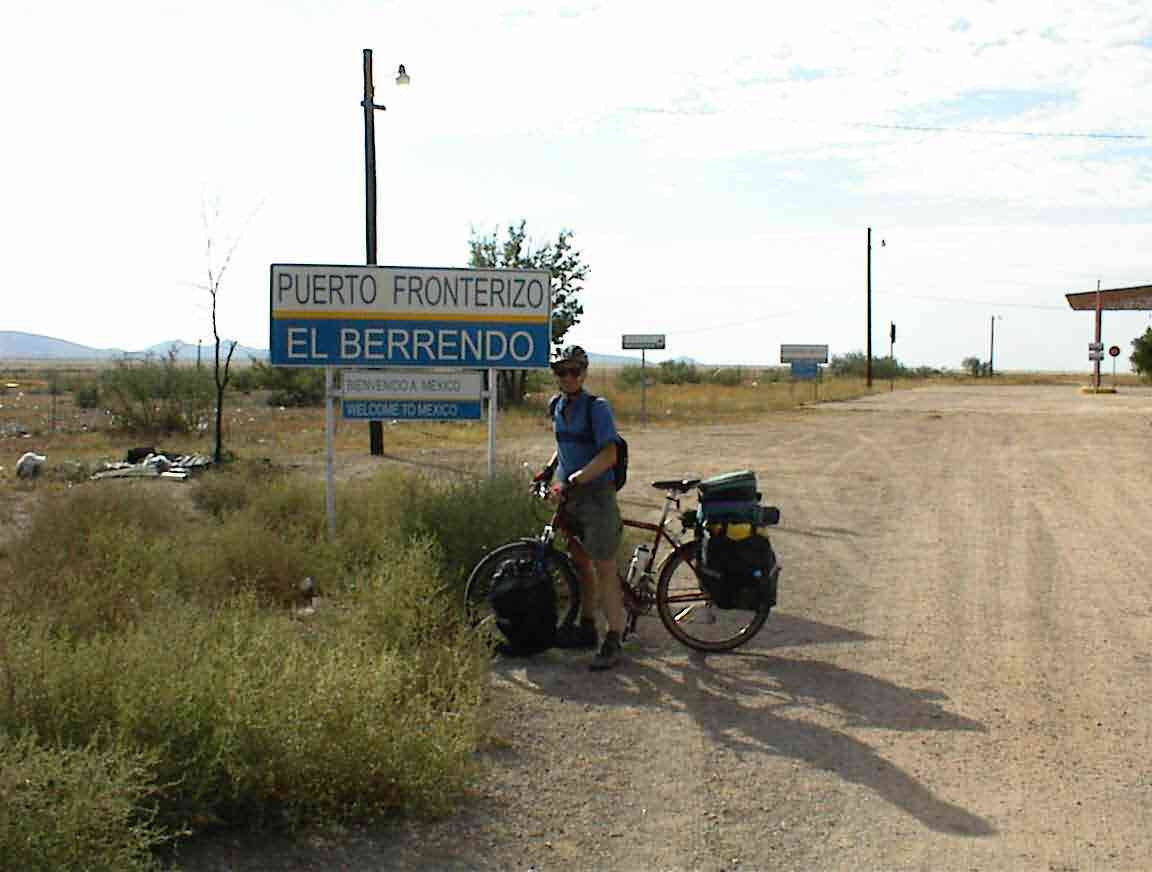
The boundary between the USA and Mexico was marked with the bronze plaque below.
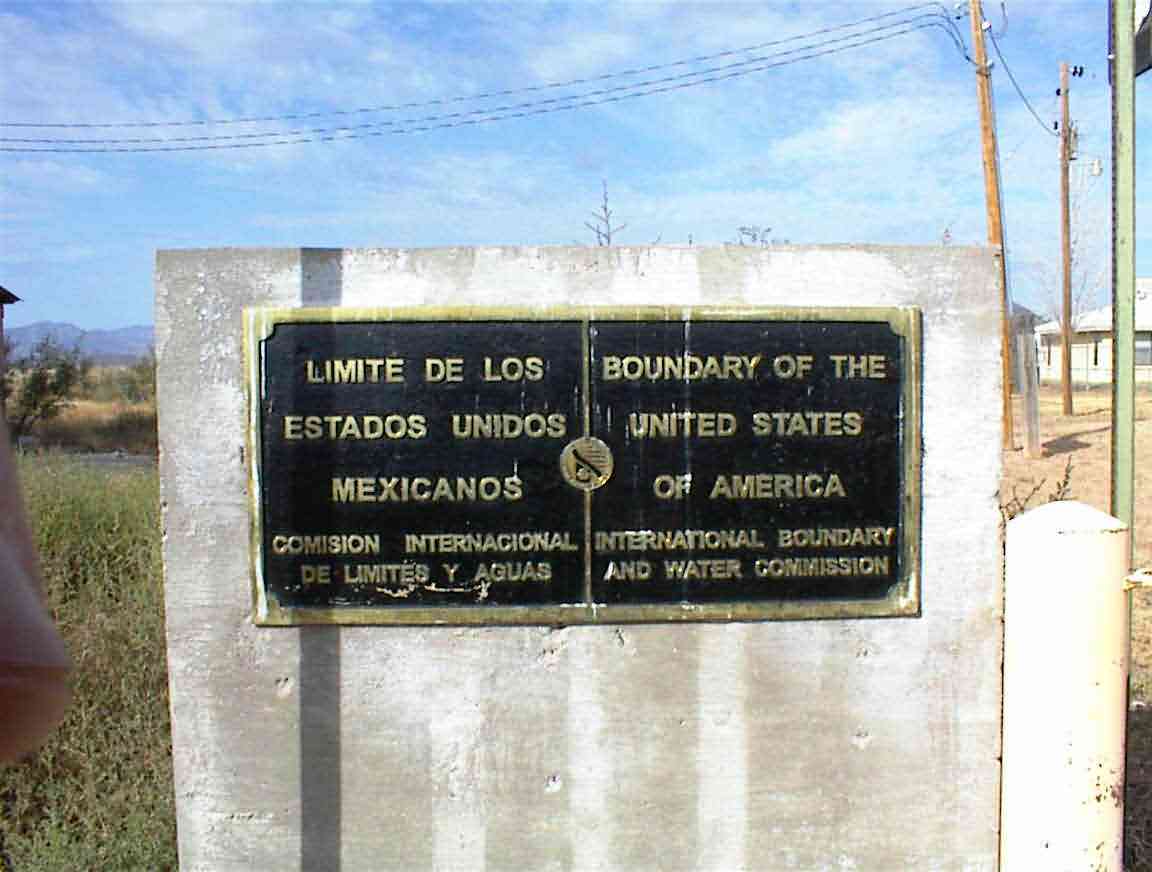
Dan pointed out that there was an old marker behind the new marker above. It was a silver obelisk and it is shown below. These were put in over a hundred years ago when the two countries agreed upon their border. They ran for some 280+ miles from Texas to Arizona.
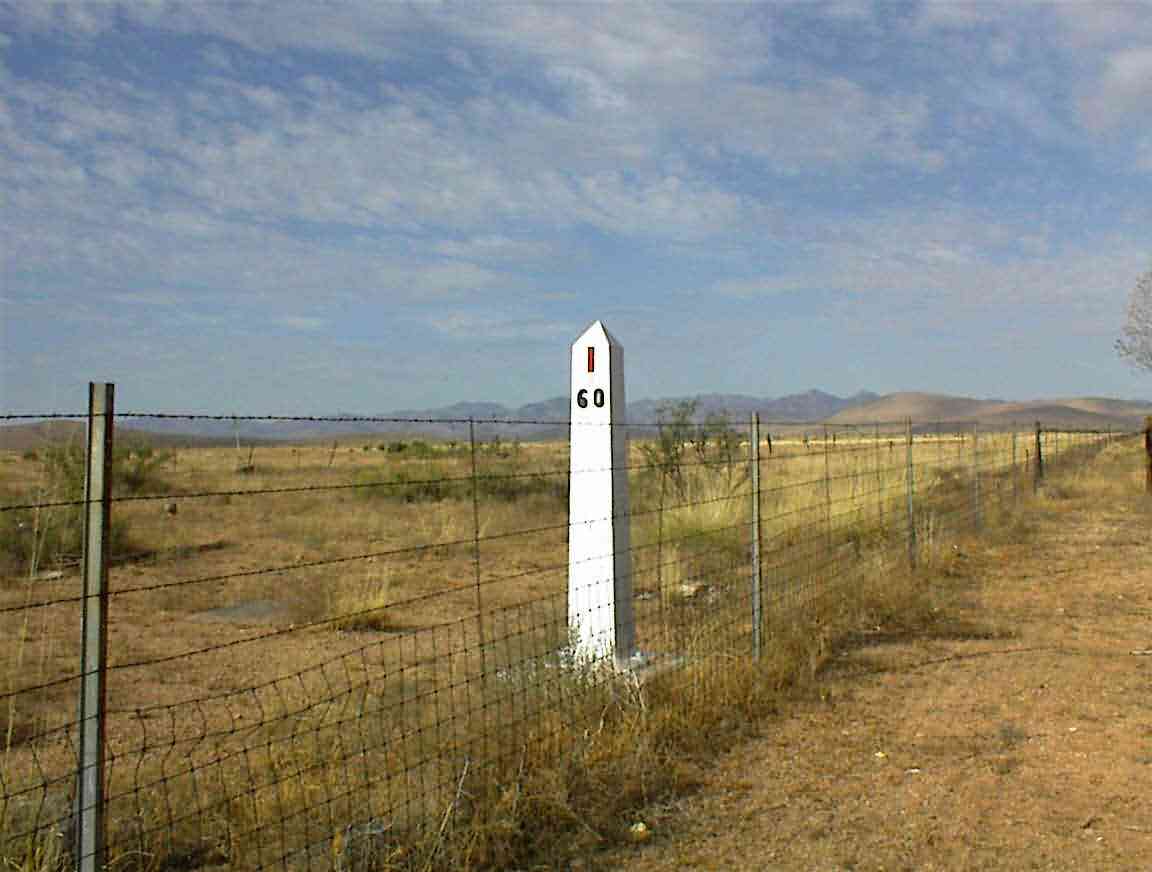
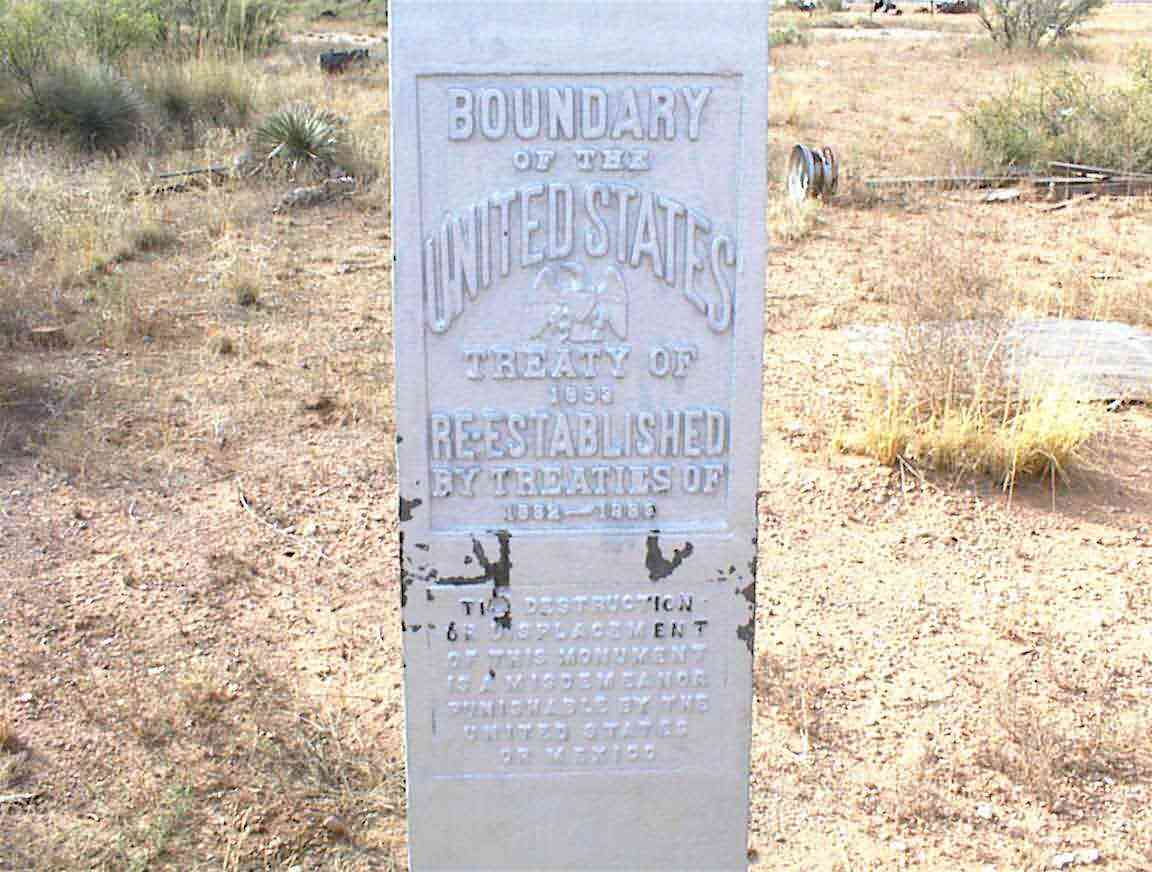
I eventually bade farewell to Dan and Tim and headed north. It was a nice sunny day, although there was a moderate wind from the east. This wasn't too bad except for when the road turned east and it made itself known. Given that I had to turn straight into the wind from Hatchita I was not looking forward to my late afternoon run.
There is something about returning along a road that I've already cycled; the return trip seems to go much faster. Since I was travelling earlier in the day than on my downward trip, the lighting was different on the mountains that lined the sides of the road.
There was a road crew who were fixing some sections of the pavement which had failed. They had a sign saying 'slow' and as I passed I observed that cyclists always travel slow and they laughed.
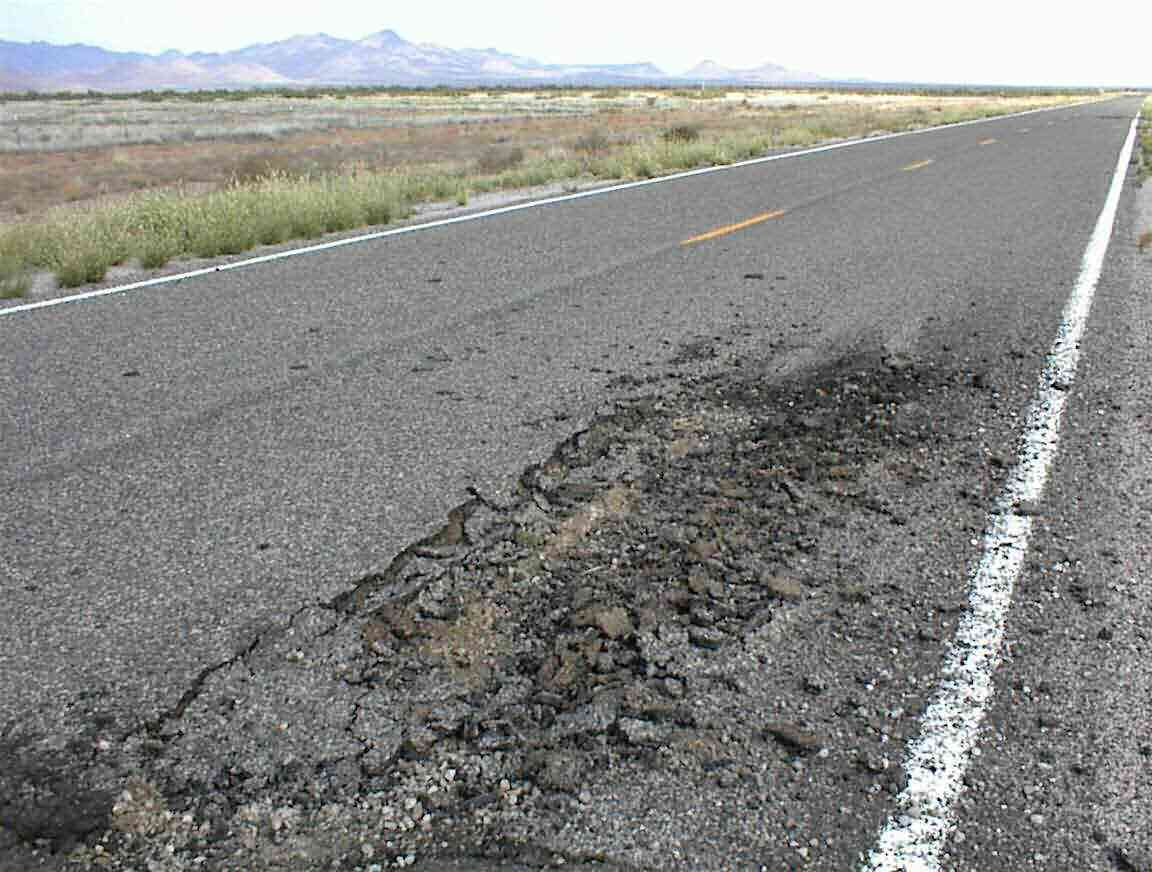
There were four large dump trucks carrying materials for the road works and they passed me continually throughout the entire trip to Hachita. On the back of the trucks they had a large sign 'Stay Back 30 Feet' which I thought was a very good idea. I've often seen cars following dump trucks very close, seemingly oblivious to the fact that there may be materials coming off the truck. I've been surprised that there aren't more accidents.
Every time the trucks passed me I was buffeted by the wind. I guess that with the road being so isolated they motor along as fast as is practicable. At one point I stopped for a bite to eat by the side of the road and it was most disconcerting to have my meal disturbed by all these trucks. Good old Murphy's Law in action yet again.
When I cycled by the place that I saw the roadrunner the previous day, I was disappointed to see that it had moved on. In fact, the only fauna I saw the entire trip were lots of grasshoppers; squashed, eating their friends, or copulating. I was usually able to avoid them, but sometimes I created a future meal by not turning in time. At least I didn't run over copulating grasshoppers. That would have been very unfair.
One thing which was different was the number of Border Patrols that I saw. I was passed a number of times by patrol cars, an aircraft passed over as did a helicopter. In fact, the entire way to El Paso I noticed that there was a lot of activity by BZorder Patrol. Seems to be one of the main employers in the area.
Eventually I reached Hachita and I decided to stop at the cafe again and have a bite to eat before heading on east towards Columbus.
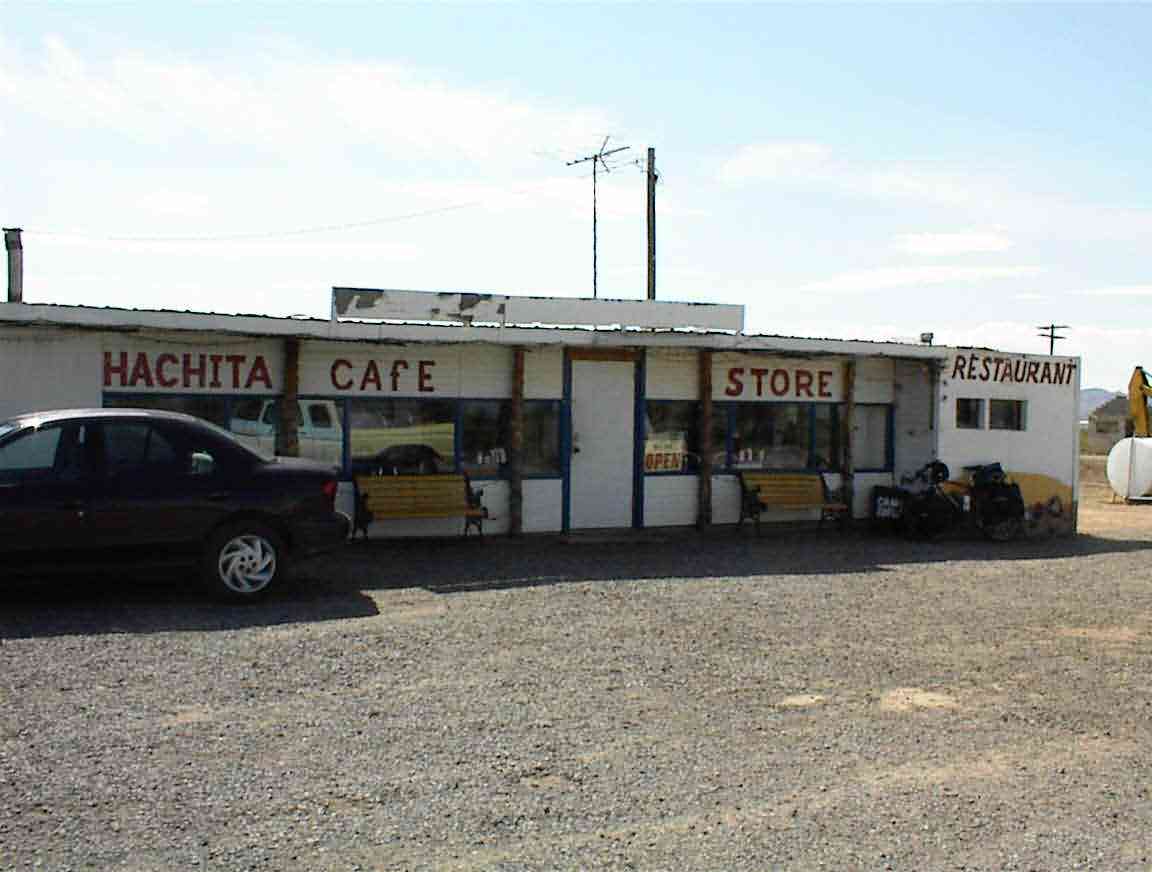
Elma, the owner, was surprised to see me back and was most welcoming. There were two other customers that she was busy cooking hamburgers for. I sat down at a table and helped myself to a chocoate brownie and a Gatorade drink. I felt pretty good after the hit of sugar.
Elma was wearing a T shirt which showed she was from the Philippino association. It transpired that she had married an American from Montana and they had moved to the thriving metropolis of Hachita where she runs this cafe. I told her that I had been in Manila in May and we shared our experiences of the Intercontinental Hotel. That was a very unusual trip for me since I was put in the presidential suite as the hotel was full. My first and last time in a $1000 a night room....
When Elma heard that I was planning on cycling to Columbus she said to one of the customers 'why don't you offer to put his bike in your truck'. t transpired that he lived in Columbus and had a large pickup truck. He immediately accepted (offered?) and I gratefully took him up on his offer. After all, I've finished my trip and so I wasn't wussing out by accepting a ride.
David was driving a jeep which had been rolled by his nephew; Javier, my ride, had brought him over to collect the jeep. Javier had the remnants of the windscreen and other pieces in the back of his truck which he moved so we could put my bicycle in. David then drove off with us following.
Javier was a judge in Columbus and his wife was mayor. They also ran the town's only bed an breakfast. It was interesting chatting with him and learning about the legal system. Judges in America are usually elected, often after being initially appointed and he explained how things worked. I asked him how many people he had sent to jail in the last 4 years and he said 1. Most of the cases were minor (theft, assault, drugs) and he prefered to give people warnings then send them away. The one exception was someone who came across arrogantly and was rude to Javier. That earned him 90 days.
I was surprised that he had no legal background. He had done many other things but had never studied law. What qualified him to be a judge I asked? The people in town liked him and trusted his judgement. He did say that he was sent a stack of books to study and had to sit some exams after elected, but even so I'm more comfortable with the New Zealand system where judges who are suitably qualified are appointed. It also explained how Reader's Digest could have a hall of shame for lawyers who made questionable judgements.
Javier dropped me off at 'Pancho Villa State Park' in Columbus. Pancho Villa was a Mexican Revolutionary who in 1916 raided the town of Columbus to punish the USA for their support of the Mexican Government. My guidebook said that this was the only invasion of the continental USA which was wrong. During the war of 1812 there were several invasions by the British, in fact they sacked Washington D.C. and burned the White House. It was painted white to cover the burn marks...
The park is at the location of the old US Army camp Furlong and several of the original buildings are still standing. They have even made a monument of the grease pit that was used for the army vehicles. It was the first one and used to train future army mechanics. The park was excellent and also doubled as a botanical garden. There was an array of cactus' which show the full variety that grow in the area.
I pitchd my tent on a nice grassey section which had picnic tables, benches and water. What luxury. I then went over to the museum across the road which was in the old railway station. There were lots of photographs and the woman curator put on a video for me to watch on the Pancho Villa raid.
The raid was thwarted by a timely response from the soldiers based in Columbus and it was unsuccessful from a tactical point of view insofar as only 11 Americans were killed versus up to 200 Mexicans. However, strategicaly it was more successful insofar as the Americans launched a punitivie expedition into Mexico to capture Pancho Villa but were unable to capture him. This enhanced his reputation among the Mexican peasants. It was a training ground for some famous US soldiers -- George Patton and 'Blackjack' Pershing among them. It was also the first integrated expedition which combined air, cavalry and motor vehicles.
Today Columbus is a very sleepy town of about 2000 people. The railway was closed 40 years ago and now the town is based on retirees and travellers. The climate is apparently very pleasant during winter. There is also a lot of border business -- especially keeping out illegal immigrants. I saw a blimp on the horizon which is used to continually monitor the border area; I saw a helicopter patrolling the border and lots of patrol vehicles.
There was one shop in town so I bought some energy bars and a bag of pretzels. That was the limit of what they had that I could eat. For dinner I cooked on my stove for the last time. I had a bag of 'Spanish Rice' that Sean had left me. I was sorry that he wasn't with me to share finishing the trip so I phoned him in New Zealand to tell him of my success.
A couple was also camping there and we chatted. David and Beth were from Seattle and on their way to Mexico where they are going to help with a water project. They were very friendly, like most Americans, and we talked at length about our experiences. They had spent the last month exploring the Southwest.
Eventually I decided to retire to my tent for my last night camping. I was a bit melancholic since tomorrow night, all things going well, I will be in El Paso and my trip will effectively be over. Life has been so simple. Eat, sleep, ride the Continental Divide. All that will end and I'll get back to my 'real' life.